Estate violenta [Violent Summer] (Valerio Zurlini, 1959)
Jul
25
1943
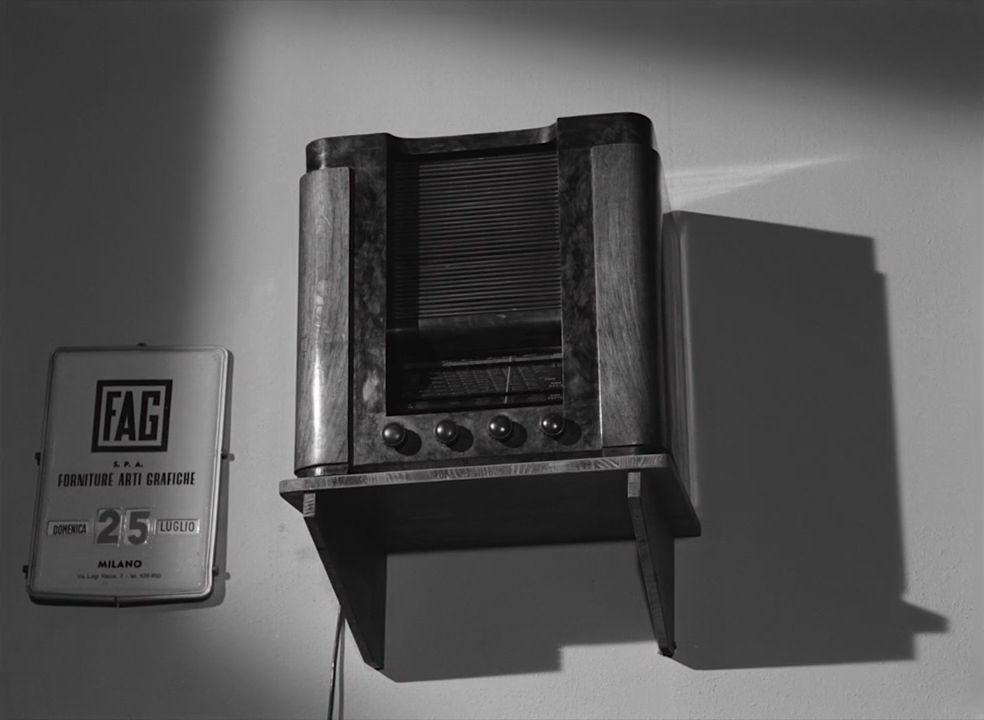
A large radio on a small pedestal. A perpetual wall calendar next to it reads DOMENICA 25 LUGLIO. DP: Tino Santoni.
ww2
“It would be thrilling if you were willing,
and if it can never be, pity me,
for you were born to be kissed,
I can’t resist, you are temptation,
and I am yours!” Estate violenta [Violent Summer] (Valerio Zurlini, 1959)
Jul
19
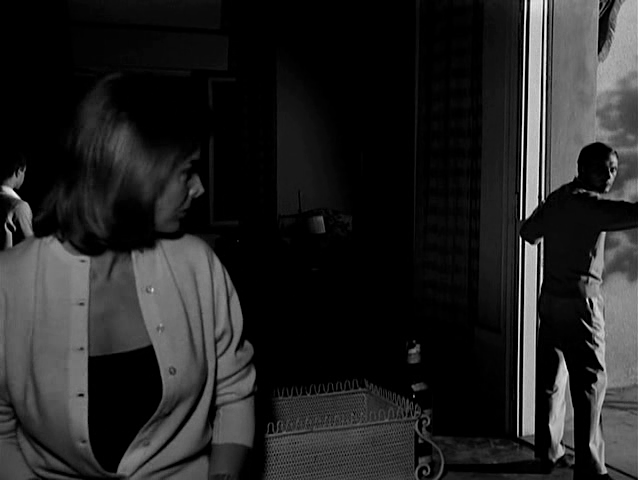
Roberta (Eleonora Rossi Drago) and Carlo (Jean-Louis Trintignant). DP: Tino Santoni.
Characters go on a date, or fall in love*
– Nacio Herb Brown & Arthur Freed, Temptation (1933)
On a beautiful summer day in Rimini, Carlo, the handsome son from a bourgeois home, saves a little girl and becomes infatuated with the girl's mother, a young widow years his senior. Set in July 1943, the events in the outer world (poss. spoilers) and the fate of the two uneven lovers slowly come to their logical conclusion.
* the Bales 2025 Film Challenge for July is, for unknown reasons, mostly not date-related and follows some sort of vacation narrative.
– Why do you always wear those dark glasses? – A souvenir of unrequited love for my homeland.Popiół i diament [Ashes and Diamonds] (Andrzej Wajda, 1958)
Jun
27
National Sunglasses Day
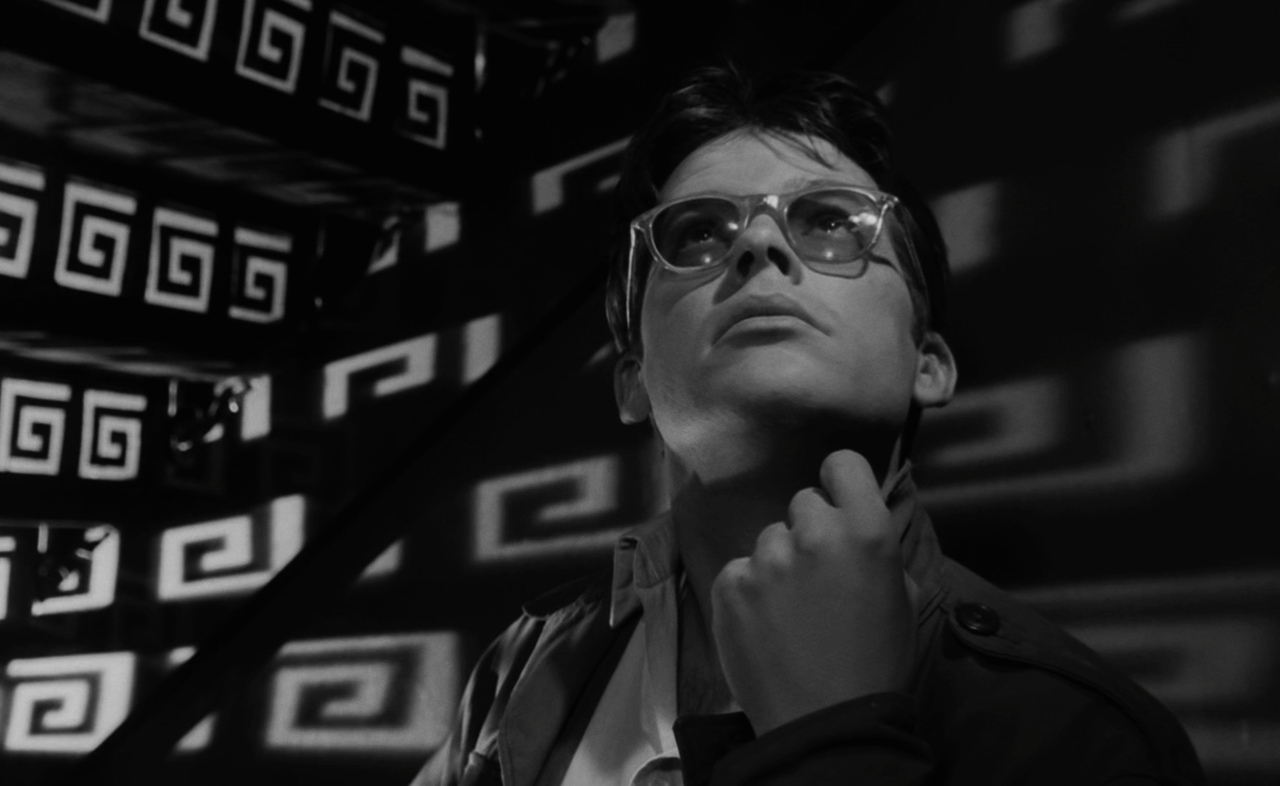
Maciek Chelmicki (Zbigniew Cybulski) wearing his sunglasses in a dark, almost German Expressionist space, embellished with meandros. DP: Jerzy Wójcik.
[The best] sunglasses in film for National Sunglasses Day (USA)
According to IMDb, the sale of sunglasses in Poland went through the roof after this film was released and Cybulski became his country's very own James Dean.
“Into my heart an air that kills
From yon far country blows:
What are those blue remembered hills,
What spires, what farms are those? That is the land of lost content,
I see it shining plain,
The happy highways where I went
And cannot come again.”Blue Remembered Hills (Brian Gibson, 1979)
Jun
16
Youth Day
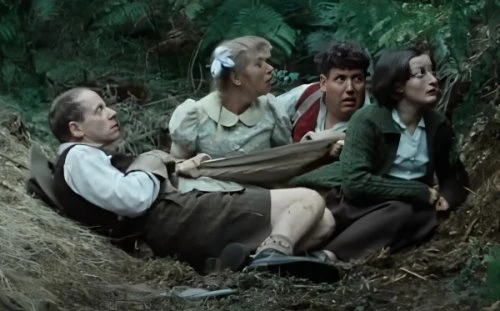
The children playing in the Forest of Dean. From left to right: Raymond (John Bird), Angela (Helen Mirren), Willie (Colin Welland), and Audrey (Janine Duvitski). DP: Nat Crosby.
A [favourite] child character for Youth Day (ZA)
– narrator, after A.E. Housman's A Shropshire Lad
A group of children plays. It's sunny and lovely in the Forest of Dean, a day to remember for as long as one lives. The war, the second one, is one of the adults' plays and far away from the children's much simpler life. It seeps through, though. You may run around, imagining being a fighter bomber, putt-putt-putting while you do so. And your uncle, your uncle!, is a parachutist! And maybe your dad is missing and your mum is doing something that involves bed sheets, and the other kids are mean about that. That too. That too is the cruelty of blue remembered hills.
Wyszedł w jasny, pogodny dzień [He Left on a Bright, Sunny Day] (Krzysztof Wojciechowski, 1972)
Jun
13

Old people exchanging food and memories outdoors. DPs: Witold Stok & Ryszard Wróblewski.
“One thing I find appalling is when people who were [Vichy President] Pétain supporters come up to me and tell me what they did for the Resistance. Sometimes it's unreal. “Oh, Mr. Gaspard, if only you knew what we did, what I did for the Resistance.” Go ahead, pal, tell me all about it. I try to stay calm. I'm a salesman, and I want to sell my product. The company doesn't pay me to do politics and pick fights, so sometimes I find myself obliged to listen to a song and dance of some guy who shows me a drawer and gets his wife to confirm that there was indeed a revolver in that drawer during the war, a revolver which he was supposedly ready to use on the Germans. Only he never actually used it. History doesn't lie.” Le chagrin et la pitié [The Sorrow and the Pity] (Marcel Ophüls, 1969)
Jun
5
Sorry I Was on a Boat Day

Two smiling farmers. The interviewer asks “What did you think about?” One of them replies “Surviving. That's it.” Screenshot via. DPs: André Gazut & Jürgen Thieme.
Someone makes an excuse on Sorry I Was on a Boat Day (USA)
– Émile Coulaudon aka Colonel Gaspard, former head of the French Resistance in Auvergne
Marcel Ophüls documents the people of Clermont-Ferrand as the microcosm of Vichy France, part of Europe's only country that happily collaborated with its occupier, Nazi Germany. What were their justifications, their excuses, their motivations? Was it survival, habit, greed? Comfort, conformity, obedience, fear?
And what is yours?
“Patrick, it's Hitler! Yes it is Hitler! Patrick, you must take a picture of me with him!”Zítra vstanu a opařím se čajem [Tomorrow I'll Wake Up and Scald Myself with Tea] (Jindřich Polák, 1977)
Jun
1

Time-traveling tourist Shirley White (Marie Rosůlková) dragging a bewildered Hitler (František Vicena) in front of her husband's photo camera. DP: Jan Kališ.
– Shirley White, American time traveler
“You must realize that today in Germany anything can happen, even the improbable, and it's just the beginning, Frederick. Personal morals are dead. We are an elite society where everything is permissible. These are Hitler's words. My dear Frederick, even you should give them some thought.”La caduta degli dei (Götterdämmerung) [The Damned] (Luchino Visconti, 1969)
May
18
Visit Your Relatives Day
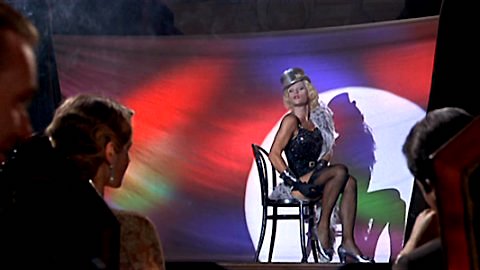
Martin Von Essenbeck (Helmut Berger) entertains the family. DPs: Pasqualino De Santis & Armando Nannuzzi.
A family gathering on Visit Your Relatives Day (USA)
– Aschenbach
The wealthy Von Essenbecks gather for a family dinner party. There is entertainment.
“Time will pass. Towns and villages will be rebuilt. Our wounds will heal. But our fierce hatred of war will never diminish.” Летят журавли [Letyat zhuravli / The Cranes Are Flying] (Mikhail Kalatozov, 1957)
May
8
VE Day

A young woman standing in what was a room in a building, looks out over the ruins of a city. A broken lampshade and a grandfather's clock whisper of other times. DP: Sergey Urusevskiy.
A non-battlefield war movie on VE Day. It had to be a Soviet film, on this date. Thank you, Russia.
– Stepan
When the cranes fly over Moscow, a young couple learns about the war. Now separated, one day, when it is over, if, they'll reunite
The hand-held cinematography, groundbreaking at the time, came from former war cameraman Sergey Urusevskiy.
“With nothing to do, no news and in terrible solitude, we were 100 unfortunates awaiting our fate. I had no illusions about my own. If I could only escape, run away…”Un condamné à mort s'est échappé ou Le vent souffle où il veut [A Man Escaped] (Robert Bresson, 1956)
May
2

A hand with dirty nails writing on a scrap of paper with a pencil stump. It starts “Mai 2 Ma chère maman, Je suis à la pris[…]“. DP: Léonce-Henri Burel.
– Fontaine